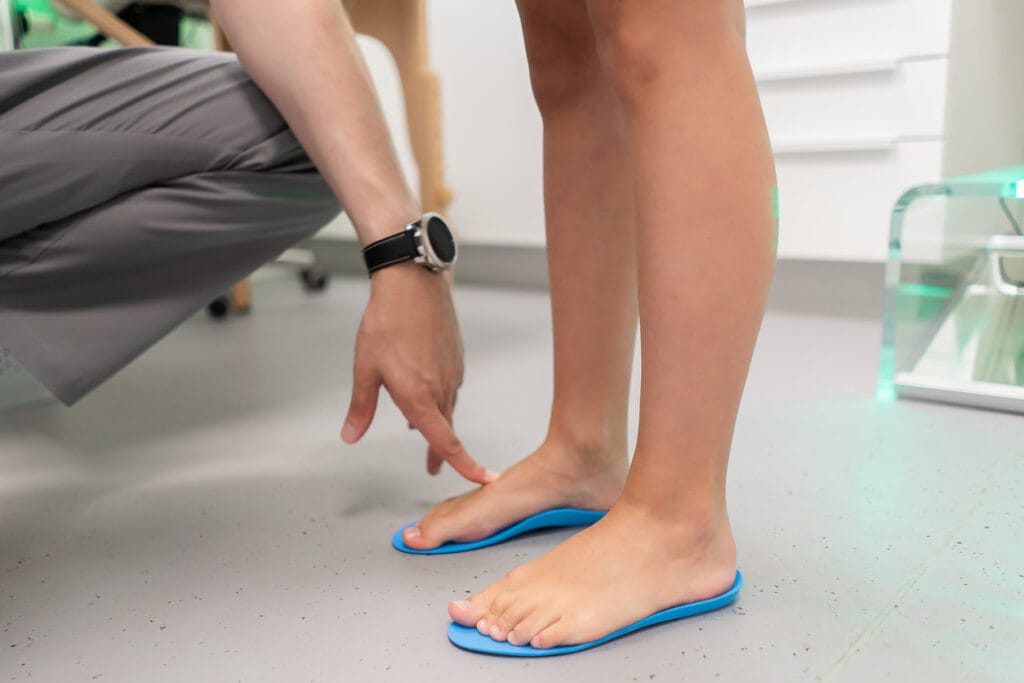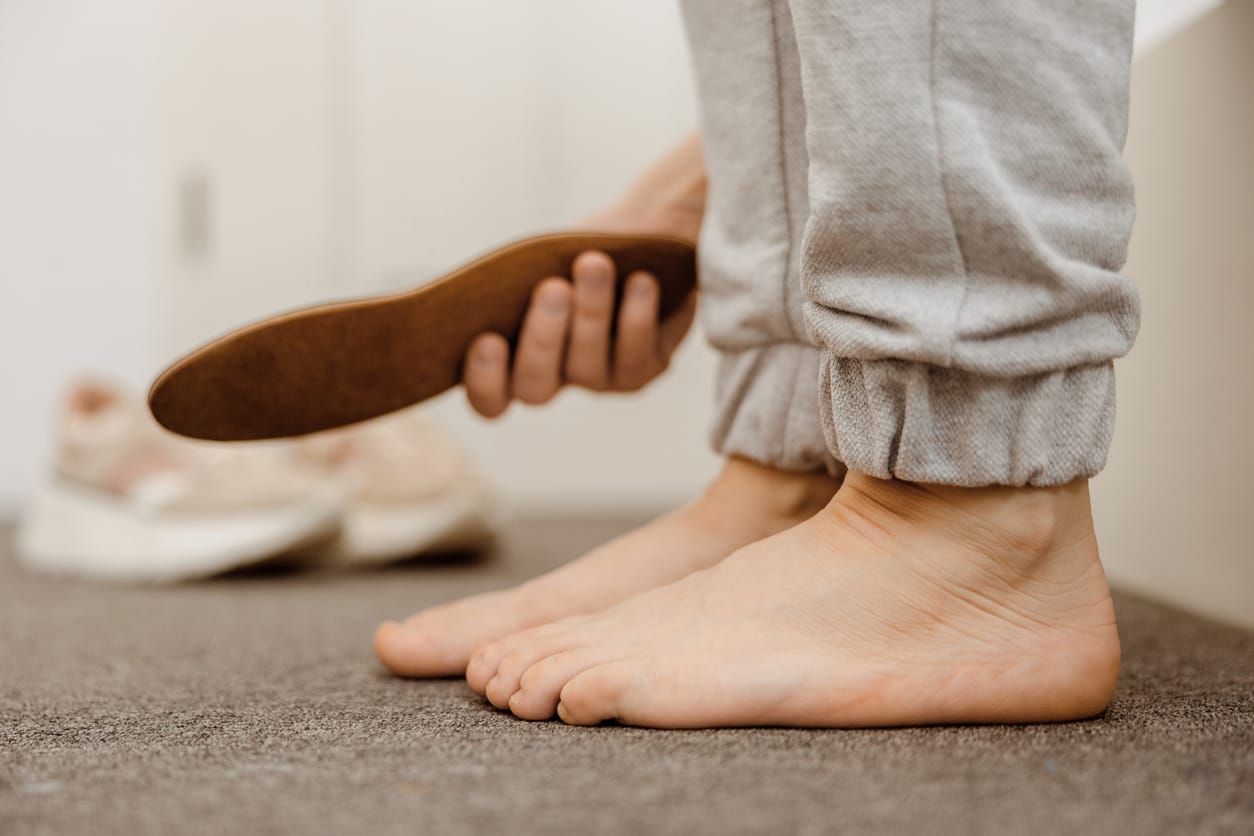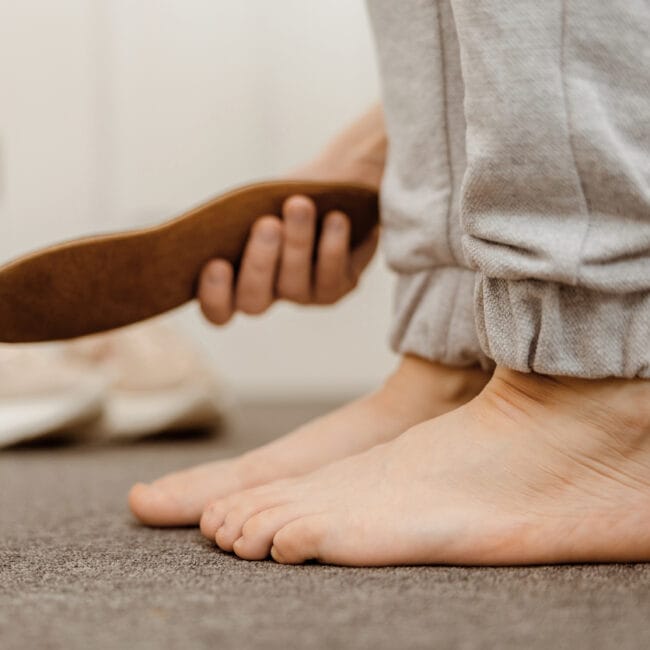Flat feet are a common condition that affects people of all ages in Ireland. While some individuals may experience no discomfort, others can face pain, fatigue, and mobility issues. Understanding what flat feet are, their symptoms, and the best ways to manage them can make a significant difference in quality of life.
What Are Flat Feet?
Flat feet, medically known as pes planus, occur when the arches of the feet are lower than usual or completely collapsed. In a typical foot, the arch acts as a shock absorber, helping to distribute weight evenly and maintain balance. When the arch is absent or reduced, the entire sole comes into contact with the ground, which can lead to discomfort and other complications over time.
Some individuals are born with flat feet, whereas others may develop the condition gradually due to injury, carrying extra weight, or the effects of ageing. Although flat feet are generally not dangerous, they can cause persistent discomfort and affect mobility if left unaddressed.
Common Causes of Flat Feet
Several factors can contribute to flat feet, including:
1. Genetics:
Flat feet often run in families. If your parents have the condition, there’s a higher chance you may develop it too.
2. Weak Arches in Childhood:
In some children, the arches never develop properly. Most children with flat feet are asymptomatic, but some may experience pain.
3. Injury:
Trauma to the foot, ankle, or tendons can lead to acquired flat feet.
4. Arthritis:
Conditions like rheumatoid arthritis can affect the joints in the feet, contributing to arch collapse.
5. Obesity:
Excess weight places additional stress on the arches, which can worsen flat feet.
6. Ageing:
Tendons in the feet can weaken over time, particularly the posterior tibial tendon, leading to flat feet in adults.
Recognising Flat Feet Symptoms
Not everyone with flat feet experiences discomfort, but certain signs can indicate that the condition is affecting your foot health. Some of the most common flat feet symptoms include:
- Discomfort or tenderness on the inner side of the foot or around the ankle
- Tiredness or aching in the feet after walking or standing for extended periods
- Difficulty standing on tiptoe
- Shoes are worn unevenly, often faster on one side
- Knee, hip, or lower back pain due to altered gait
If you notice persistent pain, it’s a good idea to consult a podiatrist for an assessment. Early intervention can prevent complications and improve mobility.
Treatment Options for Flat Feet
The positive news is that most cases of flat feet can be managed without invasive procedures, particularly if the issue is addressed early. Surgery is rarely needed, as a number of practical, non-surgical approaches often bring good relief:
Orthotic supports:
Insoles designed to support the arch — whether tailored by a podiatrist or purchased off the shelf — can improve alignment and ease pressure on the feet during regular daily use. At Spectrum Health, we provide orthotics .
Supportive shoes:
Wearing shoes that are appropriate for people with flat feet can make a big difference. Choose footwear that offers firm arch support, good cushioning, and a strong heel to improve stability.
Exercise and physiotherapy:
Targeted stretching and strengthening can improve how the feet work. Movements that build up the calf muscles and support the tendon on the inner side of the ankle (posterior tibial tendon) are especially effective.
Lifestyle adjustments:
Keeping a healthy body weight lessens the pressure placed on the arches. Swapping high-impact activities like running for gentler options such as cycling or swimming can also help to reduce strain.
Managing discomfort:
A doctor might suggest anti-inflammatory medicines to help reduce discomfort and swelling when symptoms become more noticeable.

Picking the Right Shoes for Flat Feet
The type of shoes you wear can make a big difference if you have flat feet. Supportive footwear not only reduces discomfort but also helps prevent further strain. When looking for a suitable pair, keep these points in mind:
- Arch support: Shoes with a built-in arch can improve stability and reduce pressure on the feet.
- Cushioning: Extra padding softens impact and provides greater comfort during walking or standing.
- Roomy toe area: A wider front gives your toes space to move naturally and reduces rubbing.
- Stability: A strong heel and supportive midsole can help keep your feet properly aligned.
- Orthotic-friendly: Some shoes are designed to accommodate custom inserts, which can add another layer of support.
Popular shoe brands in Ireland, such as New Balance, Asics, and Brooks, offer models specifically designed for flat feet. At Spectrum Health, our podiatrists can help you find the most suitable footwear for your foot type and lifestyle.
When to Seek Professional Help
While many people with flat feet live without issues, there are situations when professional intervention is necessary:
- Persistent foot, ankle, or leg pain
- Difficulty walking or performing daily activities
- Swelling or inflammation that doesn’t improve with rest
- Visible changes in the shape of your foot
- Symptoms worsening despite supportive footwear and exercises
A podiatrist can assess your foot structure, recommend orthotics, and develop a tailored treatment plan. Early intervention often prevents further complications and ensures long-term foot health.
Living with Flat Feet
Managing flat feet usually means taking a balanced approach that includes supportive footwear, regular strengthening exercises, and professional advice when needed.
With the right care, most people are able to stay active and enjoy daily life without ongoing pain or restriction.
If you’re based in Ireland and finding that flat feet are causing discomfort, it’s worth booking an appointment with our podiatry team. We have a range of clinics nationwide where our podiatrists can help identify the best shoes for you and suggest suitable flat feet treatment options if necessary.















